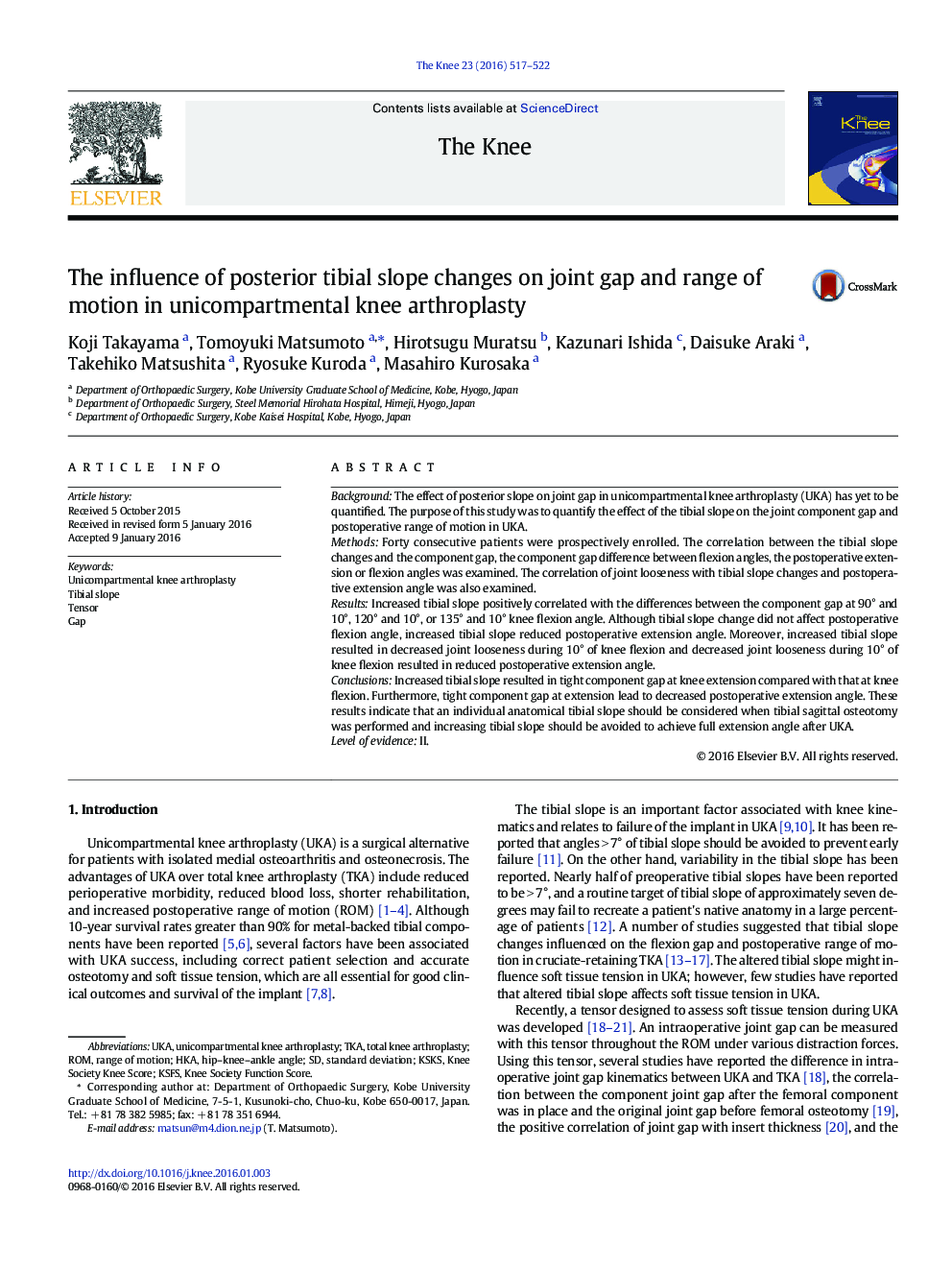| کد مقاله | کد نشریه | سال انتشار | مقاله انگلیسی | نسخه تمام متن |
|---|---|---|---|---|
| 6211156 | 1267205 | 2016 | 6 صفحه PDF | دانلود رایگان |
Highlight
- The effect of the tibial slope on the joint gap and range of motion was examined in UKA.
- Tibial slope change did not affect postoperative flexion angle.
- Increased tibial slope reduced postoperative extension angle.
- Increased tibial slope resulted in tight extension gap.
- Tight extension gap resulted in reduced postoperative extension angle.
BackgroundThe effect of posterior slope on joint gap in unicompartmental knee arthroplasty (UKA) has yet to be quantified. The purpose of this study was to quantify the effect of the tibial slope on the joint component gap and postoperative range of motion in UKA.MethodsForty consecutive patients were prospectively enrolled. The correlation between the tibial slope changes and the component gap, the component gap difference between flexion angles, the postoperative extension or flexion angles was examined. The correlation of joint looseness with tibial slope changes and postoperative extension angle was also examined.ResultsIncreased tibial slope positively correlated with the differences between the component gap at 90° and 10°, 120° and 10°, or 135° and 10° knee flexion angle. Although tibial slope change did not affect postoperative flexion angle, increased tibial slope reduced postoperative extension angle. Moreover, increased tibial slope resulted in decreased joint looseness during 10° of knee flexion and decreased joint looseness during 10° of knee flexion resulted in reduced postoperative extension angle.ConclusionsIncreased tibial slope resulted in tight component gap at knee extension compared with that at knee flexion. Furthermore, tight component gap at extension lead to decreased postoperative extension angle. These results indicate that an individual anatomical tibial slope should be considered when tibial sagittal osteotomy was performed and increasing tibial slope should be avoided to achieve full extension angle after UKA.Level of evidenceII.
Journal: The Knee - Volume 23, Issue 3, June 2016, Pages 517-522
